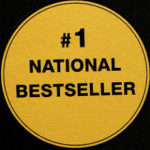This is going to be one of the most significant tips for writing a screenplay that I’ll ever write about. Here’s why: after the 8 Major Plot Points, introducing your main character is the most important scene in your screenplay. If the reader doesn’t connect to the main character from the beginning, he won’t want to stick with your hero for the next hundred pages. And yet, most aspiring screenwriters don’t due this scene justice.
So what exactly is this most amazing tip for writing a screenplay? Its genesis actually lies in a completely different form of writing–the college admission essay. The college admission essay is more similar to the character introduction scene in your screenplay than you might think.
In both, you have very little space to introduce “the star of the show.” You have to do so in a way that captivates a hard-to-impress audience pressed for time. Plus, you have to accomplish all of this by showing not telling. So what’s a screenwriter to do? Use this screenwriting tip adapted from Katherine Cohen’s admission guide, The Truth About Getting In.
In the guide, she advises high school seniors to think of 3 key adjectives that describe them and which they want to convey to the admissions panel. In their college essay, she challenges them to tell a story which demonstrates that they have all of these qualities without using the adjectives themselves–or their synonyms. The final test after revising the essay is to show it to a friend or family member and ask them to list 3 adjectives that describe the essay writer. If they match, bingo! If not–it’s back to the drawing board.
So how do you, the aspiring screenwriter, apply this tip? Think of 3 key adjectives that you want your reader to know right away about your hero. Then generate several possible ways you can introduce your hero that will SHOW he has these 3 traits. Describe the scene to a fellow screenwriter or a loved one, and ask them which adjectives they would use to characterize your hero. If the adjectives match, bravo! If not–try again. The investment is worth it.
Don’t get discouraged. As we saw in screenwriting tips from Salt and from 10 Things I Hate About You, the professionals have to struggle with this too!
Below are classic character introductions to inspire you. As you go through them, ask yourself what adjectives describe the hero and examine how each screenwriter conveyed those adjectives by showing, not telling. Notice too that the best screenwriters use this opportunity not just to introduce the hero but to also lay the groundwork for the plot (like the main story goal, the stakes, etc)…
Hero Introduction #1: As Good As It Gets
No wonder As Good As It Gets got nominated for so many Oscars! It’s full of rewatchable moments, including its introduction to Melvin Udall.
Hero Introduction #2: Casino Royale
From the beginning of this James Bond reboot, you felt like you were in skilled hands:
Hero Introduction #3: Juno
Below is an excerpt from Juno’s shooting script. Even if you find Juno’s lingo annoying, you’ve gotta admire the way Diablo Cody established Juno’s personality and her goals:
EXT. CENTENNIAL LANE – DUSK
JUNO MacGUFF stands on a placid street in a nondescript subdivision, facing the curb. It’s FALL. Juno is sixteen years old, an artfully bedraggled burnout kid. She winces and shields her eyes from the glare of the sun. The object of her rapt attention is a battered living room set, abandoned curbside by its former owners. There is a fetid-looking leather recliner, a chrome-edged coffee table, and a tasteless latchhooked rug featuring a roaring tiger.
JUNO (V.O.)
It started with a chair.
INT. BLEEKER HOUSE – MOLD-O’-RIFFIC BASEMENT- NIGHT
FLASHBACK – Juno approaches a boy hidden by shadow. He’s sitting in an overstuffed chair. She slowly, clumsily lowers herself onto his lap.
A 60’s Brazilian track plays from a vintage record player.
WHISPERED VOICE
Do you know how long I’ve wanted this?
JUNO
Yeah.
WHISPERED VOICE
Wizard.
EXT. CENTENNIAL LANE – CONTINUED
A DOG barks, jarring Juno back to reality.
JUNO
Quiet, Banana. Hey, shut your gob for a second, okay?
We see a teacup poodle tethered in the yard a few feet away from the abandoned living room set. The dog yaps again.
JUNO (V.O.)
This is the most magnificent discarded living room set I’ve ever seen.
She swigs from an absurdly oversized carton of juice and wipes her mouth with the back of her hand.
BEGIN ANIMATED TITLE SEQUENCE:
Juno marching down various street, pumping her arms like a jogger and chugging intermittently from the huge carton of juice. We watch her breathlessly navigate suburbia, clearly on a mission.
EXT. DRUGSTORE – DAY
Finally, a panting Juno arrives at DANCING ELK DRUG on the main drag of her small Minnesota suburb, Dancing Elk. The automatic doors of the store part to reveal Juno’s flushed serious face. She carelessly flings the empty juice container over her shoulder and onto the curb. A group of DROPOUTS with skateboards near the entrance glare at her.
She enters the DRUGSTORE.
INT. DRUGSTORE – CONTINUOUS
ROLLO, the eccentric drugstore clerk, sneers at Juno from behind the counter. He wears a polyester uniform vest.
ROLLO
Well, well. If it isn’t MacGuff the Crime Dog! Back for another test?
JUNO
I think the last one was defective. The plus sign looked more like a division sign.
Rollo regards her with intense skepticism.
JUNO
I remain unconvinced.
Rollo pulls the bathroom key out of reach.
ROLLO
This is your third test today, Mama Bear. Your eggo is preggo, no doubt about it!
JUNO
Silencio! I just drank my weight in Sunny D. and I have to go, pronto.
Rollo sighs and slips her the bathroom key.
Villain Introduction: The Devil Wears Prada
This post is primarily about introducing your hero/heroine, but you can apply this screenwriting tip to your villain as well.
The lead-up to Miranda Priestly’s grand entrance is what makes her introduction so great.
Note: The same principle was used to introduce Margaret in The Proposal.
I hope you found this tip for writing a screenplay helpful. If there are other amazing character introductions you’d like to share, add them in the comments!
Hero Statue by Randen Pederson





















Comments on this entry are closed.
Personally, I loved every aspect of the storyline in The Matrix. The opening with Trinity and the phone booth? Epic. A perfect way to introduce the phone booth.
This is probably sacrilegious to write on a screenwriting blog, but I only have hazy memories of The Matrix–I’ve only caught a little bit of the Matrix on tv, and I saw the Matrix Reloaded in theaters because I got a free ticket. But I don’t remember too much except for the multiplying martial arts dude. I probably should watch the Matrix in its entirety–with special focus on its opening!
I found the tips here very helpful. Why? Awareness. I’ll be paying closer attention to movie character intros to be applied into future scripts. Thanks.